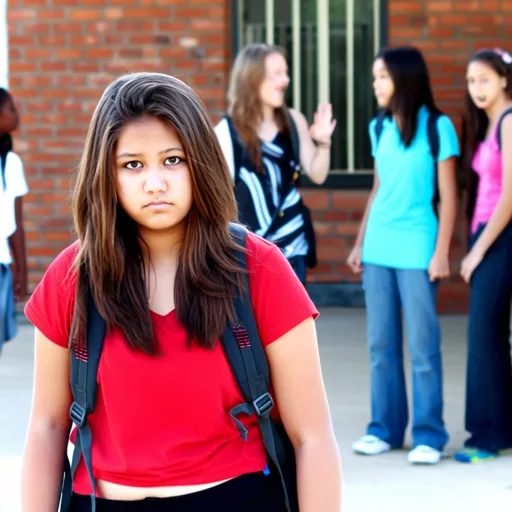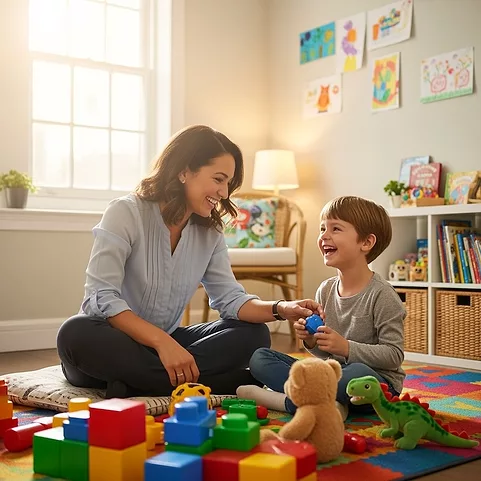Selective Mutism: Helping Kids Find Their Voice

Mariel Zeccola, APRN, PhD. Nurse practitioner in private practice, Westport, CT.
Dr. Zeccola has no financial relationships with companies related to this material.
Sarah does not talk in kindergarten; she only whispers to her teacher. She avoids playing at recess and has no close friendships. She skips the lunch line to avoid interacting with the staff and generally finds the sights, sounds, and smells overwhelming. At home Sarah is a “chatterbox.”
For children like Sarah, selective mutism (SM) is more than shyness. It’s usually related to social anxiety in which the child does not speak in certain situations. It may be mild and short term, or more severe and persistent. Without early intervention, SM can persist, impacting social development and academic performance. Here’s how to recognize it and help these children find their voice.
What is SM?
SM is an anxiety disorder where children consistently fail to speak in certain social settings despite being able to talk comfortably in others. It affects about 0.7%–2% of children, with higher rates in bilingual families, minoritized populations, and kids with speech or language delays (Slobodin O, Transcult Psychiatry 2023;60(2):313–331).
Parents often describe their child as “shy,” but SM is more than ordinary social discomfort. Unlike typical social anxiety, which involves general nervousness in social settings, SM is characterized by an extreme, situation-specific inability to speak—even when the child desperately wants to.
Risk factors for SM
Many children with SM are behaviorally inhibited—they have heightened stress responses and avoid unfamiliar situations. These kids tend to withdraw in new environments, need longer warm-up times, and are more sensitive to social scrutiny (Clauss JA and Blackford JU, J Am Acad Child Adolesc Psychiatry 2012;51(10):1066–1075.e1).
SM is more common in bilingual children and recent immigrants, but it’s not simply a language issue. New language learners may go through a temporary “silent period,” which is different from SM. The DSM-5 excludes SM diagnoses in children with limited language proficiency (Slobodin O et al, Transcult Psychiatry 2024;61(1):15–29).
Well-meaning parents and teachers can unintentionally reinforce SM. Some common pitfalls include:
- Speaking for the child instead of letting them communicate independently
- Pressuring the child to talk, increasing their anxiety
- Imposing consequences or inconsistently rewarding speech
Sarah’s teacher offers stickers if she answers questions. Her parents take away iPad time when she doesn’t. Nothing changes.
How to assess for SM
Gather a full history
- Ask parents and teachers:
- Whom does the child speak to/not speak to?
- What circumstances promote talking (activities, types of questions)?
- How does the child communicate—gestures, whispering, writing?
(Source: Kotrba A and Reed K. Selective Mutism: An Assessment and Intervention Guide for Therapists, Educators, and Parents. Revised ed. Thriving Minds Publishing; 2023.)
Get a speech and language evaluation—about 20%–50% of kids with SM have underlying communication disorders, such as expressive/receptive language delays, phonological deficits, or auditory processing issues.
Observe the child in multiple settings
- Play-based interaction
- Home videos (to help assess speech in familiar environments)
- School observation (to reveal relationship dynamics and environmental factors)
Use standardized measures like the Selective Mutism Questionnaire (SMQ) for parents or the School Speech Questionnaire (SSQ) for teachers.
Differentiate from other diagnoses
Autism: SM is situational, but autism has persistent differences in pointing, nonverbal communication, unusual prosody, restricted interests, repetitive behaviors, etc (Muris P and Ollendick TH, Clin Child Fam Psych Rev 2021;23(2):294–325).
Anxiety disorders (often co-occurring with SM, especially social anxiety disorder): SM is marked by fears specific to talking, such as sounding strange or saying the wrong word (Vogel F et al, Eur Child Adolesc Psychiatry 2019;28(9):1169–1181).
Processing differences: Some children may have sensory processing differences, respond slowly, or struggle to keep pace, any of which can make anxiety worse.
Sarah’s parents wonder if she is being manipulative. In reality, she’s overwhelmed by social demands, just as some kids get overstimulated by bright lights or loud sounds.
Use an emotion scale to track anxiety
Some children with SM struggle to express their discomfort verbally. A picture-based emotion scale (eg, a 0–5 scale with facial expressions) can help gauge their distress in different situations. See the example below. Ask the child to point to a face that matches how they feel in certain speaking situations—like answering a question in class or talking to a new person. Over time, this can help track progress and guide exposure therapy.

Treatment
School accommodations
- A 504 Plan or Individualized Education Plan can provide:
- Nonverbal participation options (writing, gestures, whiteboard responses)
- Gradual speaking exposure (starting with a “communication buddy”)
- No forced speaking (answering in front of the class comes later)
Sarah’s teacher stops calling on her in class but sets up a structured play session with a peer. Eventually, Sarah begins whispering to her buddy during reading time.
Therapy
The goal isn’t to force speech but to connect with the child in meaningful interaction that supports developing communication (Fernald JR. DIR-SM: A Developmental Approach to Selective Mutism Intervention. Castle Rock, CO: Bjorem Speech Publications; 2024). Strategies include:
“Fading in” technique: A child first talks with a trusted adult. A new person joins but doesn’t interact. Over time, the new person eases into the play and conversation.
Parent-child interaction therapy (PCIT-SM): Parents learn techniques to reinforce brave talking while reducing speech-related pressure (Catchpole R et al, J Anxiety Disord 2019; 66:102112).
Social communication anxiety treatment (S-CAT): This strategy uses structured play and gradual desensitization to encourage speech (Klein E et al, Clin Child Psychol Psychiatry 2017;90–108).
At school, Sarah’s teacher watches and then joins Sarah and a therapist in playing restaurant and pretending to order. Sarah starts practicing “brave talking” by gesturing to answer yes/no questions in class.
Medication
If SM severely impairs a child’s functioning and therapy alone isn’t enough, fluoxetine may help.
Small studies suggest fluoxetine reduces anxiety and increases speech, but many kids remain symptomatic (Manassis K et al, Eur Child Adolesc Psychiatry 2016;25:571–578).
Selective serotonin reuptake inhibitors are not a first-line treatment—they should only be considered for children with severe, persistent symptoms unresponsive to behavioral therapy.
Talking about SM
Sarah’s parents feel frustrated and helpless. You reassure them: “Sarah isn’t choosing to stay silent—this is how she copes with anxiety. Talking feels scary, but we can help her feel safe enough to try.”
Some strategies for parents and teachers include:
Lower the pressure: Don’t force speech or offer bribes. Open-ended comments are better than yes-or-no questions. Gestural communication is also acceptable.
Step back from direct talking in play: Use dolls/puppets to act out scenarios and provide other opportunities for self-expression.
Reframe anxiety as a challenge, not a roadblock: “Talking feels hard now, but we’ll take small steps to make it easier.”
Help the child recognize bodily sensations in different settings and use sensory-based activities for calming.
Four months later, Sarah chats softly with her reading buddy and whispers during semi-structured playdates. With continued support, her world is opening up.
Newsletters
Please see our Terms and Conditions, Privacy Policy, Subscription Agreement, Use of Cookies, and Hardware/Software Requirements to view our website.
© 2025 Carlat Publishing, LLC and Affiliates, All Rights Reserved.


_-The-Breakthrough-Antipsychotic-That-Could-Change-Everything.webp?t=1729528747)



